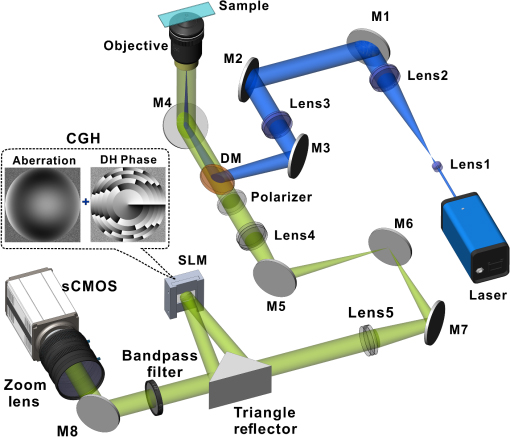Point spread function (PSF) engineering has met with lots of interest in various optical imaging techniques, including super-resolution microscopy, microparticle tracking, and extended depth-of-field microscopy. The intensity distributions of the modified PSFs often suffer from deteriorations caused by system aberrations, which greatly degrade the image contrast, resolution, or localization precision. Baoli Yao’s research team present an aberration correction method using a spiral-phase-based double-helix PSF as an aberration indicator, which is sensitive and quantitatively correlated to the spherical aberration, coma, and astigmatism. Superior to the routine iteration-based correction methods, the presented approach is iteration-free and the aberration coefficients can be directly calculated with the measured parameters, relieving the computing burden. The validity of the method is verified by both examining the intensity distribution of the conventional Gaussian PSF in three dimensions and observing muntjac skin fibroblast cells. This iteration-free correction method has a potential application in PSF engineering systems equipped with a spatial light modulator.

(Original research article "Journal of Biomedical Optics Vol. 24, Issue 3, 031005 (2019) https://www.spiedigitallibrary.org/journals/journal-of-biomedical-optics/volume-24/issue-03/031005/Aberration-correction-method-based-on-double-helix-point-spread-function/10.1117/1.JBO.24.3.031005.full")


